......LHS News......
Originally sent June 15
We have picked up some new LHS News'ers..WELCOME. And for those of you who may not know....Ron Sheffield was LHS class 1958.
He was an engineer on the Hubble Telescope. He has been very involved with the recent Atlantis launch/telescope repair and has been so nice to keep me informed on the launch and progress. I have more to share with this edition of the 'news'.
I am also working on a slide show of all the launch and related photos Ron has sent me. Hope to have them soon on the WolverNet blog. Many of you have commented on your interest & enjoyment of this 'news'.
Meanwhile.... latest from Ron few days ago:
The Hubble Space Telescope (HST) Servicing mission #4 was a tremendous success. We accomplished more that we thought we were. We installed all the hardware that we took up on orbit. We worked 13 hours days with 12 hour shifts with 1 hour overlaps. The mission itself was an emotional roller coaster ride. At launch there was an instrument that failed almost immediately after launch but mission control noticed it and told the crew to continue as it was not an actual failure but an indicator failure.
On flight day 3, we captured the Hubble with the robotic arm. The HST was supposed to position itself for capture and for some reason did not. So the commander Scott Altman flew the shuttle so that the HST could be captured. FYI, Scott was the actual F-14 pilot doing the flying that Tom Cruise was supposed to do in TOP GUN. The capture was just like the movie when Cruise said he flew cockpit to cockpit with the MIG. Scott did a great job when he flew cockpit to cockpit with the Hubble. Personally see the HST being captured was like seeing an old friend once again. Reminded me of seeing people for the first time in 50 years at the 50th reunion of the class of 58.
The first EVA day started off with a downer. We had to go through our contingency procedures to get the A Latch on the Wide Field Planetary Camera II to loosen. The cameras are the size of a large baby grand piano. The use of the contingency procedures was a time hit of over an hour. Our procedures worked and we got the WFPC II out and Wide Field Camera III (WFC III) Installed. We also removed the old SI C&H and installed the new Scientific Instrument Control & Data Handling without a hitch. Additionally we installed some door latch release mechanisms during the EVA as get ahead tasks for EVA day 3. Every thing we installed on day 1passed its aliveness test. EVA day one was over 7 hours. A normal EVA day is 6+30 hours. The day ended on a high note with great expectations.
EVA day two was the installation and removal of the Rate Sensor units. We did the installation of the most difficult one in record time (a high) but ran into problems with the installation of the other two. Again our contingency procedures and hardware got us through this but with a 1+30 hour time hit. We accomplished the battery removal and installation in excellent time. Just like on day 1 every thing passed its aliveness test. Again we were over 7 hours and again we definitely ended on a high note with great expectations.
Day three went as expected and was a high all day. We installed a scientific instrument called the Cosmic Origins Spectrograph (the size of a large refrigerator). After that, we did something that has never been done on-orbit. We took 32 screws out of a plate, physically cut a grid that was over the access cover, removed a power board, and installed a power board box. You can just imagine replacing a memory card in your computer with ski gloves on. They did that and we were really high. The power board installation was planned for two days and we did it in one long day. Day 3 was a little over 7 hours also. Again it was a high note for all.
Day 4 was similar to day 3 in that we had to replace a power board in another scientific instrument. This one did not start out well. We got three out of four Phillips Head screws out of the astronaut handle for the instrument. The fourth one was stripped. It was essential that we remove the handle so we could gain access to the power board. We went through the contingency procedures again but were not able to get out the screw out. We set up a test on the ground and determined that the screw would break if we pulled on it with 60 pounds. We sent up the procedures to the astronaut on orbit and told him to pull on it like a slot machine. He did and broke the screw and removed the handle. Now we had to remove 111 screws off an access plate so we could install the power board. Every time he put the power tool on a screw we held our breath until he got it out. We ran long that day because of the handle screw failure and a power tool battery failure. EVA Day 4 was over 7 +30 hours. We were on a high again because we had accomplished the two most difficult tasks of the mission.
EVA day 5 started out with the same problem with the A Latch on the Fine Guidance Instrument. It is the size of a small baby grand piano. We used the same contingency procedures to loosened the A Latch and install the FGS. We also installed the second set of replacement batteries with no problems. The last things we did were to install three New Outer layer Blanket covers (NOBLs). The Multi Layer installation had deteriorated significantly and the NOBLs are thin stainless steel covers that we put over the doors of the Hubble to protect the MLI. After the installation we were beside ourselves because it had been a good day.
The last thing that happened was not good but it worked out well. One of the astronauts broke off the tip of the Low Gain Antenna (size of a waffle ice cream cone) when he hit it on the way to the air lock. We had a cover that we were able to put over the LGA and it actually works better than before. Again, we were high because everything was now done and we had given the Hubble at least 5 years more and possibly 10 years of good scientific data gathering. Everything was working when we finished on EVA day 5.
The next day we released the Hubble. It was a sad time for me. I get excited every time we capture it but I get sad when we release it and it flies away. It is like seeing a close friend leave. You never know whether you will see it again and NASA plans to put it into the Pacific Ocean when it ceases to function. That will be a bad day at Black Rock for me.
That is the mission is about short as I can get. I have been asked what I will do now that this is the last mission. I am going to retire again. I kid my wife that I am going to run for governor of California so that we can get out of the mess we are in. BUT I definitely got a cold shoulder on that. That means retirement here I come. Thanks everyone for the thoughts and prayers during the mission.
In August, we will have checked out, aligned, and test all the new scientific instruments. There will be a discovery channel special in November and there is a strong possibility that I will be on it. Look for absolutely great scientific pictures in August or September.
Have a great Hubble Day! Ron Sheffield
And then couple days ago, another email from Ron with this link to fabulous pictures (give it a minute to pop up):
"Georgia these are great pictures of the mission. Also check the Launch photographs on the same web site. When you see these you will know why I love working on the Hubble." http://www.komonews.com/news/photos/45855337.html
If coming to visit the 'home town' anytime soon.....bring cool clothes! It's a HOT place right now! Georgia
Subscribe to:
Post Comments (Atom)







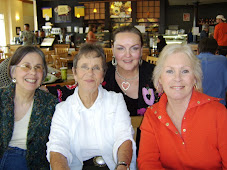




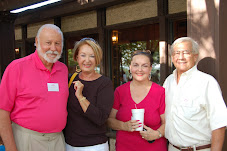


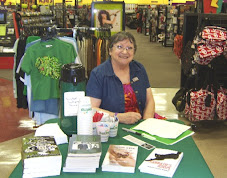



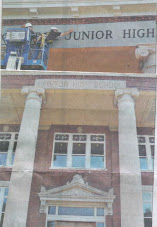



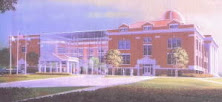
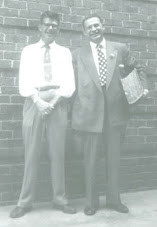
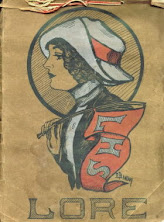

No comments:
Post a Comment